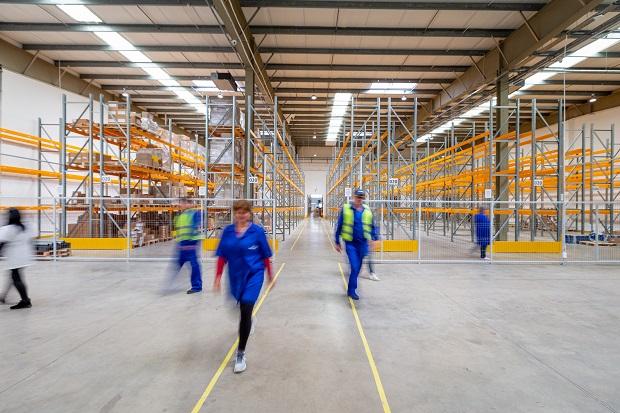Warehousing is a sector that continually evolves to meet the changing needs of supply chains and improve efficiency. As we move into 2023, several key trends are set to shape the future of the industry.

Automated Technologies: A New Era for Warehousing
Automated technologies are not only shaping current warehouse operations but also redefining the future landscape of warehousing. Their application extends beyond mere inventory management; they are revolutionising entire supply chains, creating an interconnected network of automated processes. From goods reception to sorting, storage, retrieval, and finally, dispatch, every step of the warehousing process can now be automated, accelerating the process and reducing the room for human error.
In addition, with advancements in machine learning and AI, these automated systems are becoming more intelligent, learning from each interaction to optimise their performance over time. This intelligent automation results in enhanced operational efficiency, reduced costs, and increased accuracy. As we move into 2023 and beyond, the adoption of these automated technologies should become the new norm in warehousing, marking a new era of unparalleled efficiency and accuracy in the industry.
Sustainable Warehousing: Going Green
Sustainable practices are gradually transforming the way warehouses are designed and operated. With the growing awareness and understanding of environmental issues, warehouses are incorporating eco-friendly practices ranging from energy-efficient lighting systems to the use of renewable energy sources.
This drive towards sustainability is not just an ethical choice but a business one, too, as consumers increasingly prefer companies that uphold environmental responsibility.
The choice of flooring is a significant part of this sustainability drive. LVT (Luxury Vinyl Tiles), laminate, and parquet are preferred options, as they are durable, require less maintenance, and can withstand the heavy foot and machine traffic common in warehouses – check out woodfloorwarehouse.co.uk for examples.
Laminate flooring, for instance, is composed of composite wood pressed together at high temperatures. The manufacturing process makes use of all parts of the tree, making it a more eco-friendly choice. Parquet, on the other hand, can be refinished multiple times, reducing the need for replacement and thus decreasing waste. The choice between these options depends on the specific needs and green goals.
As we move forward, we can expect more innovative, eco-friendly flooring options to emerge in the market.
Digital Twins: Revolutionising Warehouse Management
In the coming years, one technology that is set to revolutionise the warehousing industry is the concept of the “digital twin”. That involves creating a digital replica of a physical warehouse, which can be used to simulate and analyse operations, allowing warehouse managers to optimise processes and identify potential issues before they occur.
A digital twin can provide a comprehensive overview of the warehouse layout, storage areas, and inventory levels. By analysing this data, warehouse managers can streamline their workflows, increase storage space, and improve the efficiency of pick-and-pack processes.
Furthermore, a digital twin can be integrated with AI algorithms to predict future trends and challenges. That can lead to proactive problem-solving rather than reactive adjustments.
The use of digital twins is still in its early stages in the warehousing industry, but its potential benefits are clear. As we move into 2023, more warehouses should adopt this technology, transforming how they manage their operations.
The Role of IoT: Data-Driven Warehousing
The Internet of Things (IoT) is another technology set to shape the future of warehousing. IoT devices can monitor temperature, humidity, and other environmental factors, optimising storage conditions for different types of goods. Furthermore, IoT can aid in inventory management, tracking goods in real-time and providing valuable data to streamline operations.
The future of warehousing will continue to be moulded by technological advancements, sustainable practices, and the need for robust, durable infrastructure. By staying attuned to these key trends, businesses can ensure they remain competitive and efficient as we move into 2023.





Comments are closed.